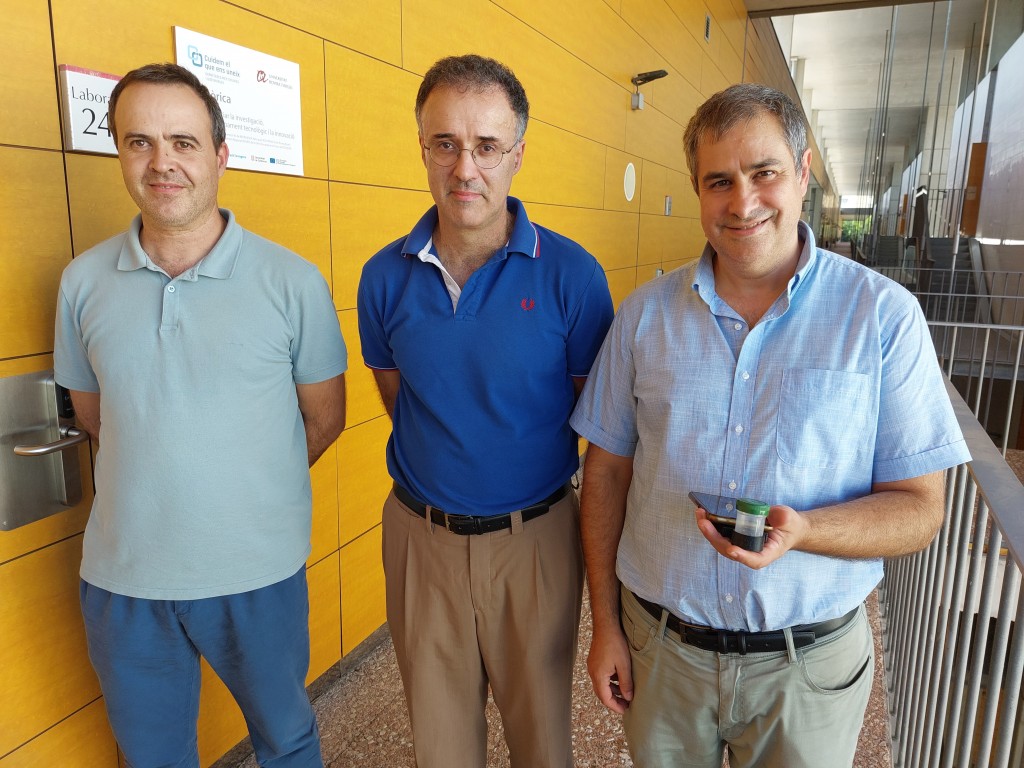Press notes 09/10/2024
A sensor is developed for early detection of bovine mastitis, which accounts for around 15% of losses in milk production
Research by the URV's Department of Electronic, Electrical and Automatic Engineering has produced an inexpensive and very practical instrument

Research by the URV's Department of Electronic, Electrical and Automatic Engineering has produced an inexpensive and very practical instrument
Researchers at the Department of Electronic, Electrical and Automatic Engineering have developed a sensor that can help in the early detection of bovine mastitis, a disease that causes inflammation of the mammary glands of cows and losses of around 15% in milk production in the farms. The instrument, which is cheap and very easy to use, measures the electrical conductivity of milk, the variable used by the researchers to predict whether the cow has mastitis and to what extent.
The research is part of a European project that has also seen other researchers from the same department developing other sensors (in their case chemical) that use substances that react with the mastitis bacteria. In contrast, the research that looks at electrical conductivity is based on statistics and artificial intelligence.
“We have done it in a much simpler way, by indirectly measuring the electrical conductivity of the milk. This makes it possible to determine whether the milk, and therefore the cow, is infected, as the conductivity changes if there is mastitis, which thanks to this system can be detected very early”, explained David Girbau, one of the researchers and member of the Nephos (Nanoelectronic and Photonic Systems) research group.
The device they have developed consists of a small vessel that holds the sample of milk, with two electrodes and a temperature sensor, which is connected to a device with a small circuit that manages the information. The resulting data can be read on a mobile phone (after first downloading a simple application) using NFC (Near Field Communication) technology, the same technology used in credit cards or cards to open doors and which is already present in most mobile phones. The data can be uploaded to the cloud, thus enabling the farmer to regularly monitor the status of the cows. “The device is very cheap, costing less than 5 euros, and it doesn’t need a battery, as it is powered by the mobile phone’s energy when it is held near to it, thus making it more environmentally friendly, easy to maintain and easy to use at any given time”, stated another researcher, Antonio Lázaro.

As it is very simple and practical to use, the farmer can repeat the operation often, which is key to monitoring the cows and, above all, for early detection, as Lázaro stated: “If mastitis is detected early, it can be eliminated quickly through a combination of rest and minor medical treatment. If, on the other hand, the mastitis is detected later and has become more serious, it is necessary to give the cow antibiotics and to stop milking it for a long time”. According to some studies, farms can have losses of between 15% and 20% due to cows with mastitis.
The research has also involved Mercè Pacios and Beatriz Prieto, among others at the Institut Català d’Investigació Química, and the results have already been published as part of the State Plan for Scientific and Technical Research and Innovation, which focuses on developing different types of sensors for use in conjunction with artificial intelligence and the internet of things. As things stand, the device has been developed and tested. It now needs a company, for example a milking machine manufacturer, to incorporate it into its system, thus giving the technology an industrial and commercial application.
Reference: A. Lazaro; D. Girbau; R. Villarino; M. Pacios; B. Prieto, et alt., “Battery-Less NFC Conductivity Sensor for Bovine Mastitis Detection in Farming 4.0,” in IEEE Access, vol. 12, pp. 45824-45838, 2024, doi: 10.1109/ACCESS.2024.3381784.
